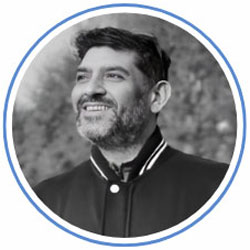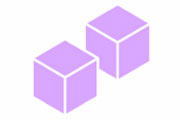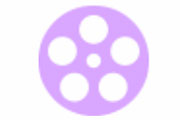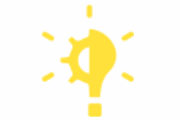‘Unconscious Bias in the Workplace’
Last month’s blog was about going back to the basics and trying to understand what terms like diversity, equity and inclusion mean, especially in a workplace setting. This month, the blog picks up from where we left off to unpack unconscious bias and how it affects diversity and inclusion efforts in an organization.
Let me start out by saying that this is not an easy concept to unpack. I’m not a psychologist, far from an expert on the subject, and definitely hold a lot of unconscious biases myself. But the intent is to talk about it, put it out there, and start from a place of honesty and deep authenticity – a step that I think many organizations are beginning to see value in, and embrace.
What is unconscious bias?
Unconscious biases, also known as implicit bias, are attitudes and stereotypes accumulated throughout our lives that can influence our decision-making, particularly when something must be decided quickly. These biases are not always ‘negative’ but can lead to inaccurate assessments based on faulty rationale. For example, we might put someone on a pedestal because he/she has an Ivy League education without considering more information about him/her; we may judge a person negatively, as lazy because they are larger or heavier than average.
No matter how much we deny it, unconscious biases influence most of our decisions. Science tells us this is because our brains can consciously process 40 pieces of information per second—while we unconsciously process 11 million pieces. Therefore, for us to function with all the stimuli bombarding us, we create mental shortcuts that make decision-making easier. Studies tell us that this bias served to distinguish friend from foe to help early humans survive. The ability to quickly and automatically categorize people is thus a fundamental quality of the human mind. Categories give order to life, and every day, we group other people into categories based on social and other characteristics.
Developing biases start at an early age, Social scientists believe children begin to acquire prejudices and stereotypes as toddlers. Many studies have shown that as early as age three, children pick up terms of prejudice without really understanding their significance. Soon, they begin to form attachments to their own group and develop negative attitudes about other groups, or the ‘out-group’. Once learned, stereotypes and prejudices resist change, even when evidence fails to support them or points to the contrary. People will embrace anecdotes that reinforce their biases, but disregard experience that contradicts them.
Given that these biases form early on in life, and are integral to the way we make sense of the world, we naturally carry these biases with us everywhere we go, especially into the workplace. This automatically affects things like who gets recruited, hired, promoted, influences the overall culture of the workplace, and frequently leads to racism, ageism, ethnic profiling, and so on.
Let’s look at the different types of biases we hold.
1) Affinity Bias
Affinity bias leads us to favor people who we feel we have a connection or share similarity with. For example, attending the same college, growing up in the same town, or reminding us of ourselves or someone we know and like. Affinity biases have a huge impact on recruitment. For example, if a candidate we have an affinity with tells us they’re a little nervous, we may smile more or offer more words of encouragement to try and set them at ease. Whereas, if a person we shared no affinity with told us the same thing, we wouldn’t behave quite as warm towards them. After the interview, the first candidate would seem to be a better fit than the second candidate.
2) Halo Effect
The Halo effect occurs when we perceive one great thing about a person and let that color our opinions of everything else about that person. As mentioned above, if we notice that someone went to a highly regarded college we tend to let this achievement influence how we see everything else about that person.
3) Horns Effect
The Horns effect is the direct opposite of the Halo effect, and occurs when our perception of someone is influenced by one negative trait (or what we perceive as a negative trait). For example, if we do not like the way someone dresses we might assume they are also lazy and unprofessional, even though professionalism and competence are not related to attire.
4) Attribution Bias
Attribution bias affects how we assess other people and their achievements. It can be particularly impactful during recruitment. When assessing ourselves, we tend to think our achievements are direct results of our merit and personality; while our failings are the result of external factors, including other people that adversely affected us and prevented us from doing our best. We are more likely to consider the achievements of others as a result of luck or chance; and their failings as a result of their personality or behavior.
5) Confirmation Bias
Confirmation bias is the tendency to search for, interpret, focus on and remember information that aligns with our preconceived opinions. Recruiters must be cautious about this bias. If we make a judgement about a candidate, we subconsciously look for evidence to back up our own opinions. We want to believe we are right and that we have made the correct assessment of a candidate. The danger of confirmation bias in recruitment is that our own judgement could be inaccurate and result in the loss of a good candidate for the job.
These biases often color how we look at race, caste, gender, age, beauty, authority, and so on. The question for us to consider is whether we can truly de-bias ourselves and our practices. The short answer to this question – No. However, we do have the means to train ourselves to recognize, interrupt and manage biases. The only way to do this is to point them out by educating ourselves and building safeguards in processes so that decision-making is more objective.
Testing for unconscious bias
Psychologists at Harvard, the University of Virginia, and the University of Washington created ‘Project Implicit’ to develop Hidden Bias Tests—called Implicit Association Tests, or IATs, in the academic world—to measure unconscious bias. These‘Implicit Association Tests’ (IATs) are designed to tap hidden stereotypes and prejudices that circumvent our conscious control.
But there is a caveat. An article shows that when some people first took the test, they were happy with the results as it indicated no automatic preference for a race, ethnic group, and so on. According to this test, these people were free of bias, even at the subconscious level. However, when they took the IAT again a few days later, the results revealed a slight implicit preference for certain racial groups over others.
The article states that the IAT might not tell individuals much about their individual biases. According to a growing body of research, and the researchers who created the test, the IAT is not conclusive when it comes to predicting individual biases based on just one test. It requires multiple testing, or an aggregate of tests before it can really make any sort of conclusions (writer Jessica Nordell unpacks the complex and controversial science of implicit bias in her article and the idea that people can act in biased ways even when they sincerely reject discriminatory ideas).
Despite this, testing for bias is an important place to start. If people are aware of their hidden biases, they can monitor and attempt to control hidden attitudes before they are expressed through behavior and cause damage. Recognizing that the problem is in many others—as well as in ourselves—should motivate us all to try both to understand and to act. It can be easy to reject the results of the tests as ‘not me’ when we first encounter them. But that’s the easy path. To ask where these biases come from, what they mean, and what we can do about them, while difficult, is the only solution.
Tools to minimize workplace bias:
Assuming we begin to work towards recognizing our biases, there are many practices that we can follow to control or minimize its impact in the workplace.
- Set D&I goals. From more innovation to more talented employees to higher retention rates, there is clear evidence for why companies should focus on creating diverse workplaces. Setting D&I goals is the first step that signals wanting to overcome unconscious biases that operate in the workplace. (I explore the business case for D&I in my next blog)
- Widen your work circle. Work with a more diverse range of people and get to know them individually. This will help expand your horizons, lead to a better understanding of the cultural differences that exist in the world, and reduce the intensity of your biases.
- Try blind recruitment. Removing information from a candidate’s application that might influence your hiring decision – such as name, age, location, and school name – can help you make a more objective decision on their suitability for a role-based only on relevant skills and experiences. Similarly, it is worthwhile investing in recruitment tools and software as it helps with eliminating biases in how we look at our talent pool and the overall recruitment process, by introducing some kind of standardization.
- Writing neutral job adverts. Make use of tech tools to check if job adverts for your organization contain unintentional gender/race/ethnicity-specific language that could discourage men or women from diverse backgrounds from applying. For example, words such as ‘decisive’ and ‘self-confident’ are regarded as masculine-coded, while words such as ‘collaborative’, ‘empathy’, and ‘trust’ are seen as feminine-coded.
- Use artificial intelligence (AI). While the debate on AI rages (the data used by algorithms to make decisions may reflect the biases of those who programmed it, as well as the previous human decisions that it uses as its data points), I personally think AI has significant potential to help limit the impact of our unconscious biases.
- Invest in training. Regular and immersive training can help organizations address biases systematically and effectively. One-off interventions are less likely to be effective. Deep-diving into biases at various levels of the company can help reveal where biases lie and what biases are unique to groups/roles/teams/departments. Stacey Gordon, a well-known D&I strategist, highlights that while organizations complain about the costs of such training, it is more important to focus on the cost of what unchecked biases could do to an organization’s image, reputation, and access to talent.
- Publish data and conduct audits. It is important to publish and disseminate your D&I data and metrics in order to assess whether your commitment and practices to overcome unconscious bias are being met. Audits and tracking metrics add legitimacy to change efforts.
- And, finally, Encourage others to speak. It is crucial to ensure that everyone in your organization or team contributes to decision-making processes – not just the people who are like you or think like you. That way, you might realize that a decision may have been influenced by unconscious biases. This can only happen when you create a culture that encourages open dialogue and lets others know that they shouldn’t be afraid to speak up, refute or challenge one another.
These are just some of the many tools and steps we can take to rectify how our unconscious biases seep into organizational processes. But one does not have to wait for an ‘organization’ to take these initiatives. We as individuals can address it within ourselves as a start (we must not forget that we make up the institutions and processes we inhabit). One just has to google ‘unconscious bias/eliminating unconscious bias in the workplace to find plenty of research, innovative best practices, and tips we can apply in our daily life.
I come back to the point I started this blog with – intent. At the end of the day, while recognizing that addressing unconscious bias is complex and far from easy, none of these ‘tools and practices’ will yield returns unless there is genuine intent, at an individual and organizational level, to educate ourselves about biases and manage it. Without it, our D&I practices will not just be lip-service, but may even be counterproductive to the end goal of inclusion.
In my next blog post, I discuss the business case for D&I goals. Till then, I leave you with an eye-opening TEDx Talk on unconscious bias by Valerie Alexander:
https://www.youtube.com/watch?v=GP-cqFLS8Q4&ab_channel=TEDxTalks
#unconsciousbias #diversityandinclusion #asktherightquestion #biasatwork #syngrity
Keya Bardalai is a Senior Research Consultant at Syngrity. She has a Ph.D. in Social Anthropology and specializes in work and employment in the service economy. Keya has a keen interest in gender in the workplace and works on how spaces can be made more just, equitable, and inclusive for all.
Sources:
https://skillpath.com/blog/unconscious-bias-training-for-companies-is-more-important-than-ever-
https://medium.com/@socialbeings/unconscious-bias-a9a145642fd9
https://www.catalyst.org/2020/01/02/interrupt-unconscious-bias/
https://www.learningforjustice.org/professional-development/test-yourself-for-hidden-bias
https://www.vox.com/identities/2017/3/7/14637626/implicit-association-test-racism
https://www.ciphr.com/features/unconscious-bias-in-the-workplace/







 MALATI VASUDEVA
MALATI VASUDEVA VIKRAM BADHWAR
VIKRAM BADHWAR PRIYANKA KUMAR
PRIYANKA KUMAR SUMAL VARGHESE
SUMAL VARGHESE














